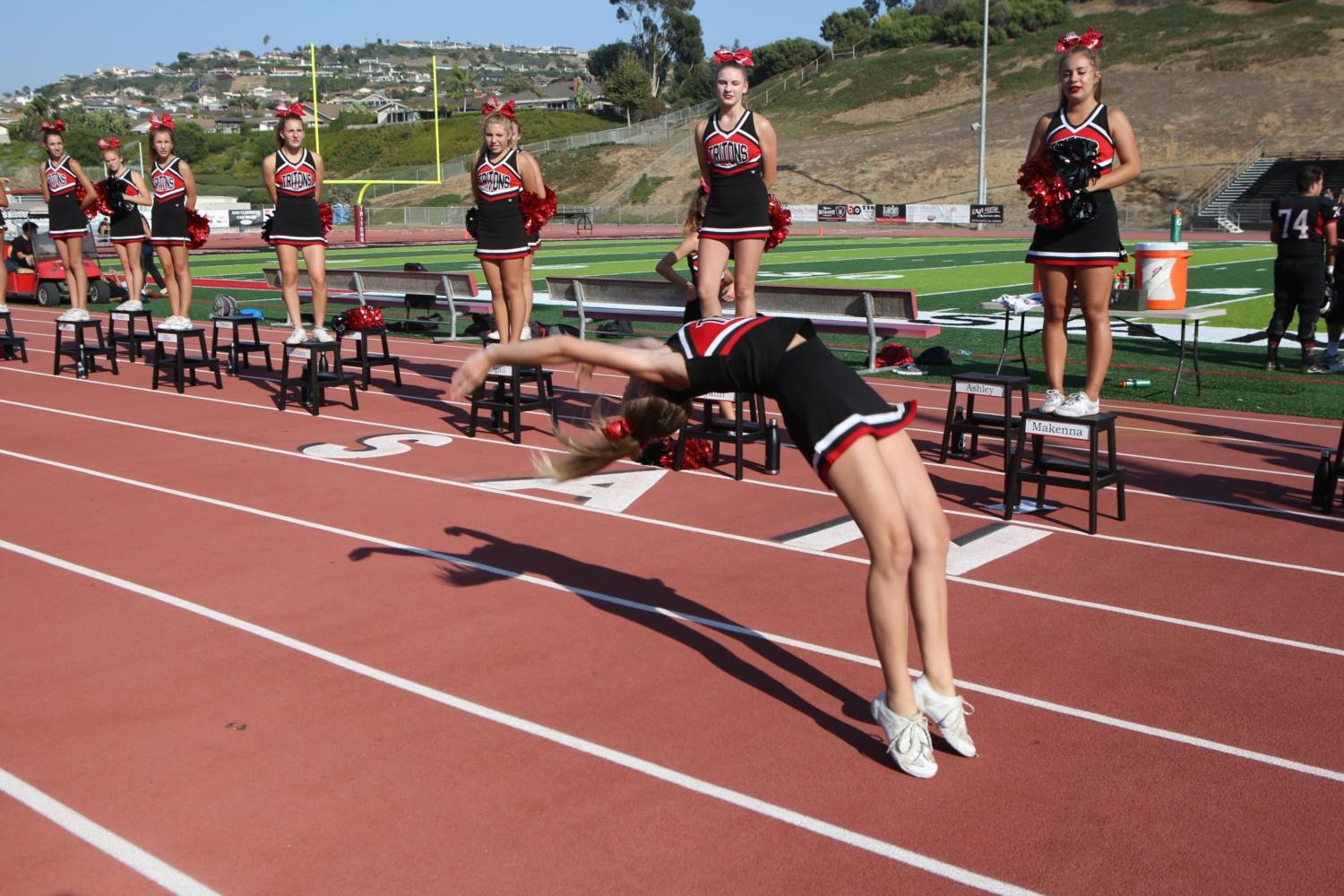
By: Abigail Calandra | Writer
March 28, 2019
Tumbling, by definition, is “the skill, practice, or sport of executing gymnastics feats (such as somersaults and handsprings) without the use of apparatus” (Merriam Webster). Tumbling, just like anything else, is taught from the ground up. When first beginning tumbling, students learn somersaults, or forward rolls, and cartwheels. As they progress, they are taught different handsprings, tucks, layouts, and twisting skills. Tumbling is a physically demanding sport, tumblers must be able to carry their own weight and gain the momentum necessary to perform the skill with enough height, so that they may land it. Tumbling not only requires agility and physical strength, it also requires mental strength. Tumblers have to cope with their fears and attempt skills that are not only dangerous, but have to be prepared to fall a few times in the process.
Though tumbling is a component of cheerleading, dance, and gymnastics, it is its own sport in itself. When people discuss tumbling as a sport on its own they are typically talking about power tumbling which is competed on a 6’ x 84’ fiberglass-rod floor. Power tumblers begin their pass with a running start into a series of skills, normally beginning with a roundoff or a front-punch. A front punch in layman’s terms is a front flip. Entries into a tumbling pass vary based on level and ability. To put it into context, most power tumblers begin their final flip at the height of a basketball goal (10’).
San Clemente High School does not have a gymnastics or tumbling team, however, they do have a cheer team. Tumbling is a major component of cheer, but it does not make up the entirety of the sport. In addition to tumbling, high school cheerleaders stunt, dance, and cheer for the teams at their school. All-star or competitive cheerleading routines are a fast-pace, two and a half minute routines that consists of stunting, tumbling, and dancing.
“At first I thought cheer was going to be really similar to gymnastics but I realized that cheer is a lot more activities at once,” junior Julia McNeal said. “I loved that I was able to show all my potential at once instead of throughout the day, like you do in gymnastics.”
Competitive cheerleaders don’t cheer for a team, they are the team competing. Gymnasts and power tumblers spend time learning technique and basic skills, while it’s more of a rush for cheerleaders to learn tumbling. Cheerleaders also do not flip more than once in their final skills, while it is normal for gymnasts to flip twice or even three times. Cheerleaders also occasionally start their tumbling from a standing position while power tumblers and gymnasts take a running start. When cheerleaders run into their tumbling, they only take two steps. Gymnasts, on the other hand, take about six. Gymnastics and competitive cheer are both done on spring floors while high school cheer is done on a dead floor, or mat without spring, so the skills performed by high school cheerleaders are often simpler, and with less height.
“I did not enjoy going from a spring floor to a high school cheer mat,” said junior Vivian Worthington. “I did not feel like I could do as many things because I felt like I did not have enough power and the impact on my joints was awful.”
Cheerleading is also by groups doing synchronized, choreographed motions and tumbling; gymnastics and tumbling are individual sports. Though, in both gymnastics and cheer, tumbling is only part of the sport. Both tumbling and cheer take immense amounts of athleticism; they may make it look easy, but there’s a lot more practice involved that goes unnoticed.

Leave a Reply